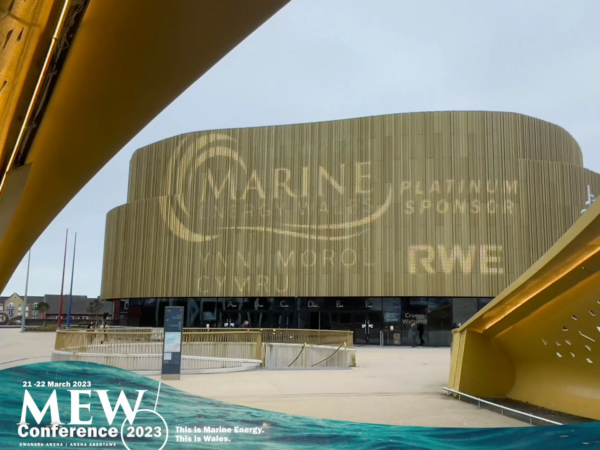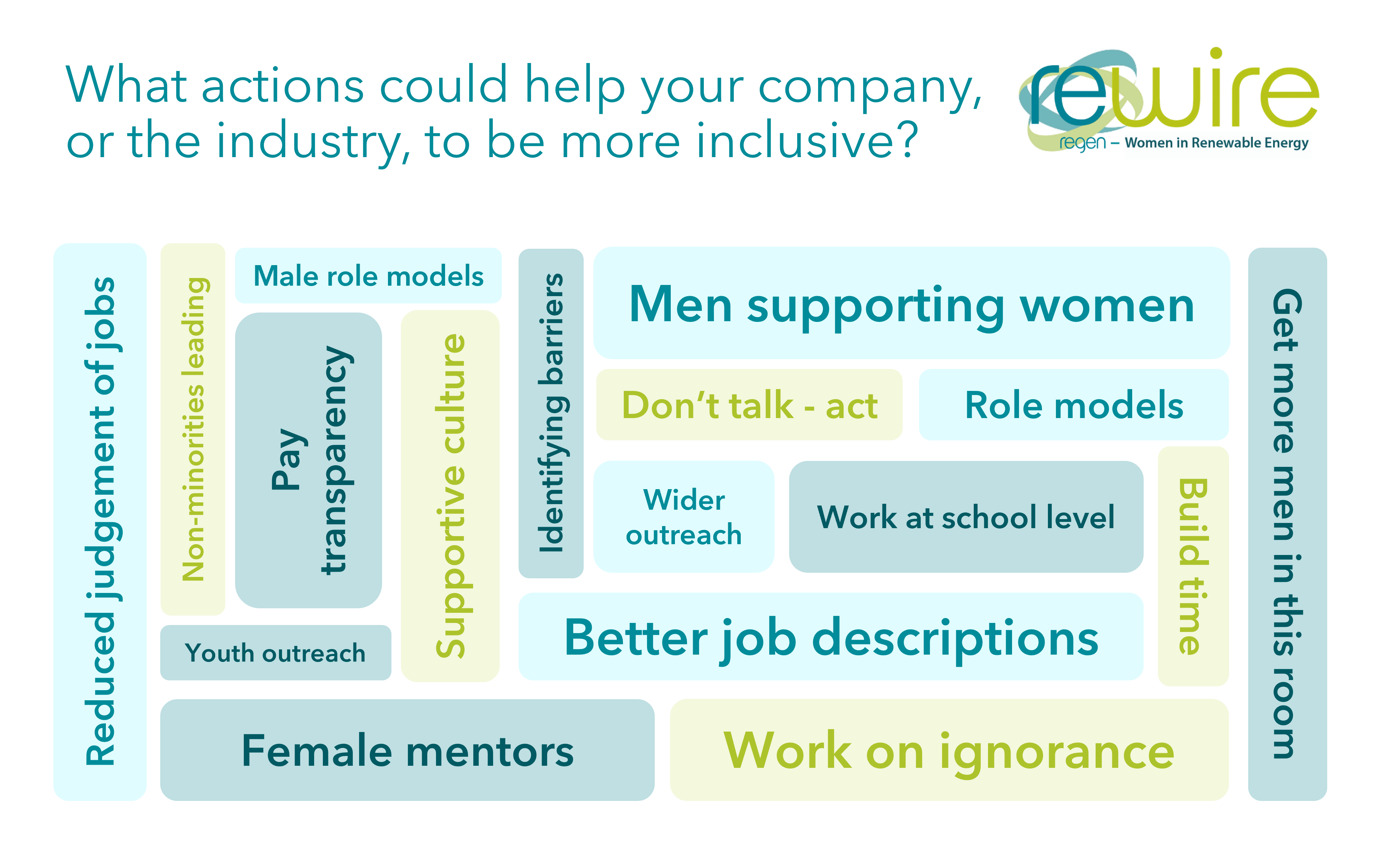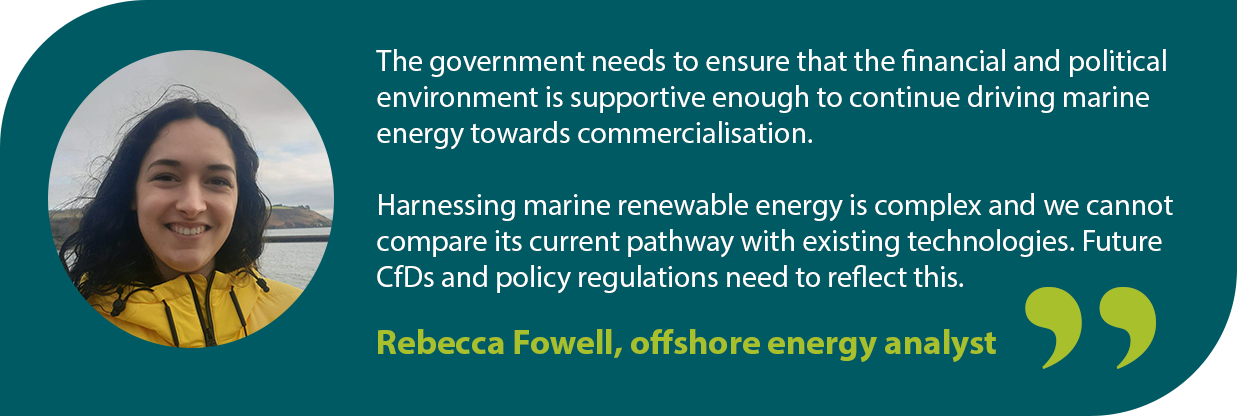With so much going on in the sector since we attended the annual Marine Energy Wales conference in Swansea last month, Becky Fowell, offshore energy analyst and Grace Millman, offshore sector lead reflect on the latest and greatest in the world of offshore energy.

Marine energy – a growing industry once again
The Marine Energy Wales conference is an annual two day event bringing together industry leaders, researchers, academics and experts to network and learn about exciting developments in tidal stream, tidal range, wave and floating offshore wind (FLOW) energy projects in Wales.
This year, Marine Energy Wales welcomed more than five hundred delegates. The growing success of the event is a clear signal of increasing certainty about the future of marine energy deployments in the UK and the role of marine energy in net zero. Several major milestones over the last 18 months, including The Crown Estate’s ambition for 4 GW of FLOW in the Celtic Sea by 2035 and a £20 million ringfence for tidal stream in the Contracts for Difference (CfD) Allocation Round 4 (AR4), have brought a revitalised confidence to the industry.

However, the momentum around marine energy needs to be maintained. With AR5 publishing disappointingly low administrative strike prices and halving the ringfence minima for tidal stream, there is a risk that the industry could face diminishing investor confidence.
A call to arms for diversity and inclusion
As part of Regen’s Women in Renewable Energy Network (ReWiRE), we organised and chaired a panel discussion at the conference looking at ‘How to build a more inclusive industry’. Founded in 2014 by Regen’s associate director, Rachel Hayes, ReWiRE runs a mentoring scheme, market insight events, leadership training and raises the profile of women across the clean energy sector.
As an offshore industry, only 18% of the workforce are women, but the audience for this panel discussion had a gender split of two-thirds women to one-third men. Not only was the gender balance of the audience not representative of the industry, it didn’t even match that of the conference, with numerous male audience members leaving before the session started.
So, why is diversity and inclusion seen as a women’s topic? And worse still, why does progress in building a diverse and inclusive industry fall to those already marginalised by the system?
 Figure 1: Slido results from ‘Building a more inclusive industry’ panel session at Marine Energy Wales 2023
Figure 1: Slido results from ‘Building a more inclusive industry’ panel session at Marine Energy Wales 2023
Could the government be about to gamble away the UK’s leadership in offshore wind?
At the 2022 conference, there was a real buzz about FLOW – The Crown Estate had just announced their ambition for 4 GW of FLOW in the Celtic Sea by 2035 and a number of projects were set to bid into AR4. The 2023 conference reflected on the significant progress made in the past 12 months, notably with Blue Gem Wind’s Erebus project becoming the first offshore wind project to gain a marine licence in the Celtic Sea. However, it was hard to ignore the current political backdrop which has created a storm of difficulties for the industry, from the Electricity Generator Levy (more like a super-tax rather than a windfall tax) to consistently decreasing strike prices in the CfD.
In Regen’s latest insight paper, we discuss recent trends in CfD strike prices, the impact of this on future auctions and how rebuilding trust and collaboration between industry and government is essential to mitigate the growing delivery risk we are seeing.

Regen has also explored the different non-price criteria that could be included in the CfD mechanism to help deliver wider energy system benefits, drawing on our Go West! analysis. This highlighted the significant benefits to be gained from a geographically diverse offshore wind portfolio and, in particular, for capacity off the west coast to play a vital role in energy system balancing, energy security and price stability.
Regen also contributed to a discussion at the conference about community benefits from offshore renewable energy projects, building on the paper we published last year. Our research showed that delivering local benefits has become an integral part of renewable development; however, more best practice guidance is needed as community benefits are playing an increasing role in supporting local communities and enabling a just transition.
A mix of highs and lows for tidal energy
Tidal energy was a hot topic at the conference, after several key industry announcements earlier in the month.
Similarly to FLOW, there has been a buzz over the last 12 months around the progression of tidal stream energy and its role in the UK’s renewable energy mix. Most notably, a ringfence of £20 million enabled tidal energy’s first ever CfD in 2022 and will continue to support four projects (totalling 40 MW) to commercialisation, connecting to the grid by 2027. However, the governments’ recent decision to halve the ringfence to £10 million in AR5 could send the momentum for tidal stream in the opposite direction. Exacerbated by the ever-decreasing strike price, there is a risk that future tidal stream deployments could struggle to get off the ground, meaning fewer projects may be able to bid into AR5. This apparent ‘reduction in appetite’ could limit the capacity to lobby for an increase to the ringfence in AR6 and beyond.
Conversely, the conference was treated to an announcement by the Welsh First Minister, confirming £750,000 for tidal lagoon research. This money will fund a minimum of three research projects that will focus on the deployment of tidal lagoon technology, addressing and overcoming past barriers, whilst maximising future benefits to Wales. With several tidal lagoon propositions across the Welsh coastline: Swansea Bay, Colwyn Bay and Cardiff Tidal Lagoon, this funding could support a clearer development pathway for these projects to move forward.
The route to commercialisation for wave
Unfortunately, the complexity of harnessing wave power, alongside its operating environment, have resulted in wave energy converters lagging behind other forms of renewables.
That being said, it was made clear at the conference that the ambition and continuous developments from the wave energy industry have pushed the technology significantly closer to commercialisation. Several wave energy developers are nearing, if not already testing, full-scale prototypes. Many have reserved berths or built infrastructure capable of hosting commercial wave arrays in the forthcoming years. Such developments are critical for the industry to solidify its place in the future renewable generation mix and allow the energy system to benefit from the balancing effects brought about by the complementary nature of wave energy to both wind and solar generation.

The complementary nature of wave energy doesn’t stop at power production. Several wave energy developers have formed strategic partnerships with other marine users to explore the financial and operational benefits of co-locating wave energy with other offshore assets, including FLOW, solar arrays and aquaculture farms. However, to reduce the financial and operational risks associated with wave energy co-location, more wave-only deployments may be needed in the near term to improve its technology readiness levels. If this is the case, the government needs to ensure that a supportive environment is created.
by Becky Fowell, offshore energy analyst (left) and Grace Millman, offshore sector lead (right)


It is great to see the Offshore Wind Champion’s independent report on ‘seizing the opportunity’ of offshore wind be published today. You can see Regen’s press statement here. Over the coming days, we will be publishing a more in-depth look at the report and its recommendations.
Interested in hearing more? Reach out to Regen’s offshore sector lead Grace Millman to discuss Regen’s offshore work and potential collaboration opportunities.
